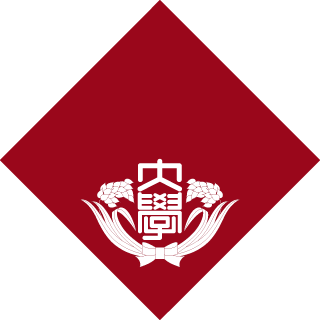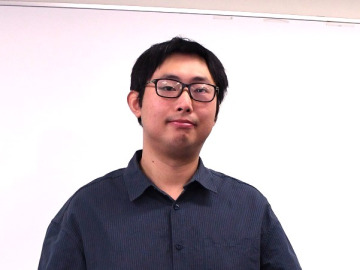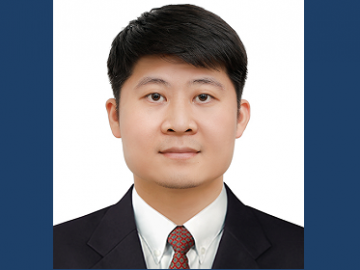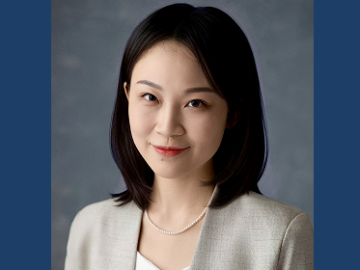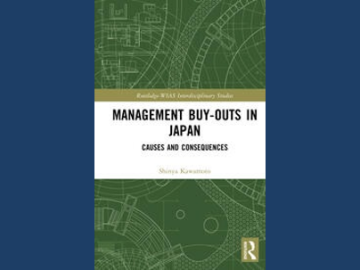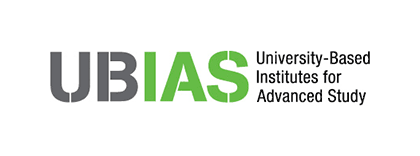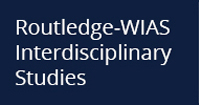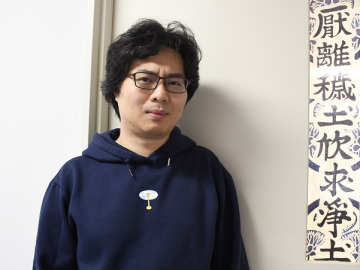
HUNG Tak Wai, Assistant Professor
For much of the twentieth century, Taiwan’s outreach to overseas Chinese communities—especially in Southeast Asia—was a vital part of its soft power. Among these efforts, the hua-ch’iao (華僑, Chinese sojourners) education policy stood as a cornerstone of Taiwan/Republic of China ’s engagement. But beginning in the 1990s and accelerating into the 2000s, this system began to unravel. As Taiwan redefined its own identity, the meanings of “Chineseness,” “compatriot,” and “belonging” also began to shift—often in ways that left Malaysian Chinese communities feeling caught in between. This article examines how Taiwan’s educational and identity policies toward overseas Chinese—particularly Malaysian Chinese—transformed during this crucial period. We argue that Taiwan’s internal debates about nationhood and identity had deep consequences abroad, exposing contradictions in how Chineseness was imagined and enacted.
A Historical Legacy Reimagined: Taiwan, Ch’iao, and the Politics of Identity
For much of the postwar era, the Republic of China (ROC) on Taiwan cast itself as the legitimate government of all China, including overseas Chinese. In this framework, hua-ch’iao were not just diaspora—they were “compatriots,” expected to uphold loyalty to the ROC and participate in its ideological struggle against the Communist regime in Beijing. Malaysia, with its large Chinese community and history of Chinese-medium schools, was a critical partner in this strategy. Under Kuomintang (KMT) rule, Taiwan offered generous scholarships, university placements, and support for Malaysian Chinese students, known as ch’iao sheng (僑生). These students were viewed as a political and cultural bridge—ambassadors of anti-communist “orthodox China.” Many Malaysian Chinese accepted this role, drawn by cultural affinity or opportunity, but others felt ambivalent. As the Malaysian government increasingly promoted assimilation and Malay nationalism, Taiwan’s insistence on genealogical Chineseness became both politically awkward and socially isolating for some.
This tension reached a turning point in the 1990s as Taiwan itself began to rethink its identity. Under President Lee Teng-hui 李登輝, and later more forcefully under President Chen Shui-bian 陳水扁 and the Democratic Progressive Party (DPP), the idea of Taiwan as a separate nation—distinct from “China”—gained traction. De-Sinicization efforts included removing “China” from institutional names and redefining the nation’s cultural orientation. In this new landscape, the status of hua-ch’iao students became a dilemma. Were they guests, citizens, compatriots, or foreigners? Were they remnants of an outdated Cold War policy, or potential assets in Taiwan’s new diplomatic outreach? The government’s answers were often inconsistent. In 2000, the Overseas Chinese Affairs Commission was renamed the Overseas Compatriot Affairs Commission, retaining its Chinese name and acronym (OCAC) but signaling a shift in ideology. Yet by 2005, scholarships were slashed, and new benefits for international students explicitly excluded hua-ch’iao. The message was mixed, if not contradictory.
Malaysian Chinese in the Middle: Identity, Exclusion, and the Limits of Belonging
Malaysian Chinese communities have a long and complex history of balancing cultural loyalty to China with political loyalty to Malaysia. Chinese-medium education was historically viewed with suspicion by British and later Malaysian authorities, who feared it fostered ethnic nationalism or even communist subversion. Despite this, Malaysian Chinese organizations like Dong Zong 董總 (The United Chinese School Committees’ Association of Malaysia) fought to preserve Chinese language and culture, framing it as a matter of cultural rights, not political affiliation. But Taiwan’s approach often blurred that line. The ROC’s unilateral recognition of overseas Chinese as “citizens” imposed a political identity many Malaysian Chinese did not seek. During Taiwan’s authoritarian years, this policy could turn dangerous. One notorious case is that of Wu Lai, a Malaysian Chinese who was misled into traveling to Taiwan while trying to return home from mainland China. Wrongfully detained and accused of communist sympathies, Wu was imprisoned for over a decade and eventually deported back to Taiwan—stripped of his Malaysian citizenship.
Even in less dramatic cases, the practical consequences were profound. Ch’iao sheng were treated as locals in university admissions, but as foreigners when seeking work or residency after graduation. Taiwan’s employment laws demanded overseas graduates earn salaries double the minimum wage to qualify for work permits—an unrealistic benchmark in a sluggish job market. Reforms in 2012 under President Ma Ying-jeou introduced a five-year grace period, but the long-term restrictions remained. Taiwanese employers, wary of the bureaucracy and costs, generally avoided hiring foreign graduates. All this created a frustrating paradox: Malaysia’s Chinese students were welcomed as brothers and sisters in culture—but not quite in law or policy. They were good enough to study, even to serve as symbolic carriers of “Chineseness,” but not to fully participate in Taiwanese society. As a result, many students returned home disillusioned. The contradiction ran even deeper for younger Malaysian Chinese who did not identify as Chinese citizens at all. For them, the very concept of ch’iao education—framed as a return to the homeland—was outdated and even offensive. They saw themselves first and foremost as Malaysians, and the Taiwanese system, with its assumptions of loyalty and bloodline, failed to recognize this shift.
From Diplomacy to Dissonance: The Future of Ch’iao Policy
By the early 2000s, Taiwan’s policy toward overseas Chinese had become a battleground of competing ideologies. The DPP’s commitment to Taiwan independence clashed with the old KMT-era framework of Chineseness and overseas compatriot solidarity. Initially, the DPP called for abolishing the OCAC altogether. But once in power, the Chen administration saw diplomatic value in maintaining these overseas networks. Instead of dismantling the ch’iao system, the government tried to quietly repurpose it. This resulted in policies that were neither coherent nor satisfying. Overseas Chinese were still expected to support Taiwan on the international stage. Yet they were offered fewer benefits, murkier legal protections, and little clarity on their long-term status. Symbolic gestures—like calendar cards urging students to respect both Taiwan’s and their host country’s national flags—failed to address deeper contradictions.
These ambiguities also played out in Taiwan’s internal politics. In 2006, the OCAC’s English name was once again changed to avoid confusion with the PRC. In 2012, the use of simplified Chinese in OCAC materials triggered backlash from pro-independence legislators. In 2017, a commissioner’s ambiguous remarks in Beijing about “eventual reunification” sparked outrage. The OCAC found itself pulled between Taiwan’s green (DPP) and blue (KMT) political camps, unable to present a unified front. Meanwhile, in Malaysia, the PRC ramped up its own influence. Organizations like the Malaysia One-China Promotion Association, backed by Beijing, promoted reunification narratives and challenged Taiwan’s diplomatic legitimacy. Even some ROC-aligned alumni began voicing discomfort with Taiwan’s retreat from “Chinese” identity.
Today, the legacy of hua-ch’iao education remains fraught. Taiwan still recruits overseas Chinese students, but the ideological foundations of the program have crumbled. The old vision—of a global Chinese family united under the ROC—has faded. But no clear alternative has taken its place. For many Malaysian Chinese under the influence of Chinese nationalism (partially nurtured by ROC government), Taiwan’s stance feels like a broken promise. In the past, Taiwan asked them to be Chinese first and Malaysian second. Now, it seems to ask them to be Taiwanese-friendly, but not quite Taiwanese, and certainly not Chinese in the old sense. The political calculus may have changed, but the human experience of exclusion, confusion, and abandonment remains the same.
After the Fall of Chineseness
Taiwan’s transition from a Chinese nation in exile to a distinct Taiwanese polity is one of the most dramatic identity shifts in East Asia’s modern history. But in that journey, it has left behind not only the institutions of the past—but also the people once embraced by those institutions. Malaysian Chinese students who came to Taiwan under the hua-ch’iao banner entered a system that promised cultural solidarity, educational opportunity, and shared identity. What they found was a state in ideological transition, unsure of how to treat them—not quite foreigners, not quite compatriots.
As Taiwan continues to navigate its complex position between China, independence, and the international community, its treatment of overseas Chinese offers a cautionary tale. Identity politics may be driven by domestic necessity—but they reverberate far beyond national borders. In the end, Taiwan’s hua-ch’iao education policy was more than a cultural exchange program. It was a mirror of Taiwan’s self-understanding. And as that self-understanding continues to evolve, so too must the policies that reflect it.
*For the complete version of this article, please refer to Hung Tak Wai, Kwan Yuk Sing, Ching Ka Hung, ‘The Challenge of “Chineseness”: Taiwan’s Identity and Education Policy for Hua-ch’iao and Malaysian Chinese from the 1990s to 2000s’, Translocal Chinese: East Asian Perspectives, 18 (2024) 6–30.
*The Republic of China (ROC) was founded in 1912 and was the government of all China until 1949, when it lost in a series of military conflicts to the Communist Party and shifted to Taiwan. Since then, the ROC has governed Taiwan and nearby islands like Penghu, Kinmen, and Matsu. It has developed into a multi-party democracy and is often referred to as Taiwan in common usage. The People’s Republic of China (PRC) was established in 1949 and controls China. It is a one-party authoritarian state governed by the Chinese Communist Party. The PRC claims Taiwan as part of its territory, even though it has never ruled the island. Taiwan, while technically the territory governed by the ROC, is now widely used as a shorthand name for the ROC itself. It has its own government, currency, military, and foreign relations, though it is not recognised by most UN member states.
